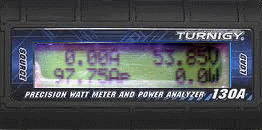Hyena's
Pre-release Magic Pie did actually have the wires coloured incorrectly, but even though the wires were clearly labelled to identify the correct polarity, he wrongly assumed that someone must have made a mistake with the stickers:

He soon discovered that the stickers were actually correct when he tried to connect the battery connector to his 55.5V LiPo pack and melted a pair of contacts inside the connectors:

Paul, as your friends original connector had already failed, I'm wondering whether the battery wires may have shorted out on the sharp metal edges where they both enter the axle? This could cause either the switch contacts to fail, or the
BMS short circuit protection to shut off the power.
Did you measure the 50V output while the battery was actually connected and turned on?
Perhaps the 49V drop was actually within the
BMS itself rather than across the length of the battery cables?
Did you measure the voltage across the two Anderson connector contacts?
The polarity on the battery connector should be the exact opposite of this one:

So the connector on the battery side should have its exposed pin connected to the negative terminal, and the enclosed socket connected to the positive connection.
The battery wires are are very stiff, and surprisingly thin, but mine regularly coped with 60 Amps and even withstood a maximum current of over 97 Amps with no sign of any discolouration whatsoever:

It will be interesting to find out what exactly is causing the low voltage problem.
Alan